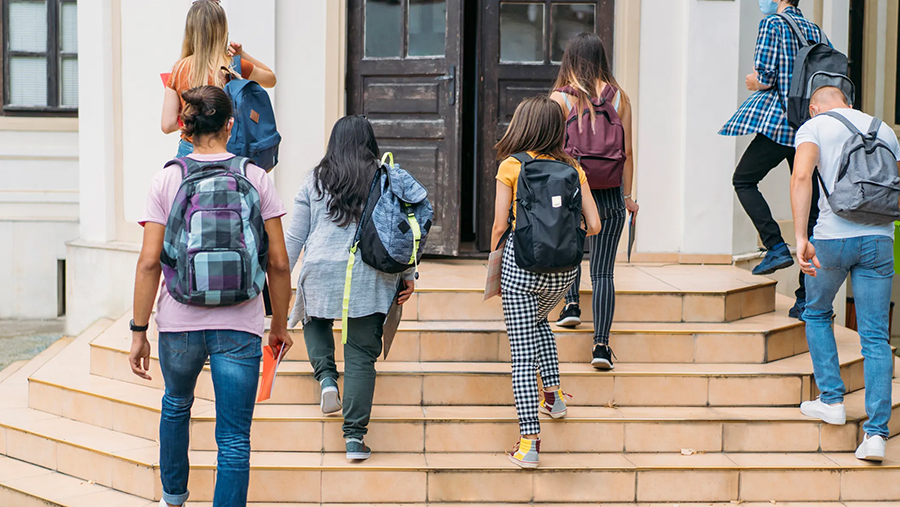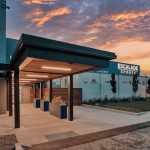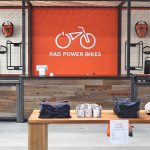According to the recently released 2024 Deloitte Back-to-School Survey, back-to-school (BTS) spending for K-12 students will likely remain flat. Parents surveyed expect to spend $586 per student in grades K-12, down just $11 year-over-year but up $57 compared to 2020.
That flattening of spend may come at the expense of some brand loyalty. Deloitte noted that while 62 percent of parents surveyed plan to shop within a fixed budget, they may sacrifice loyalty to do so, with 67 percent reporting they would shift brands if the preferred brand is too expensive, 62 percent will shop at a more affordable retailer and 50 percent will shop for private labels over name brands, underscoring the need for retailers to offer incentives to keep shoppers engaged.
“We expect back-to-school spending to be flat to down modestly when adjusted for inflation, mainly driven by middle-income families juggling financial priorities and ongoing inflation perceptions,” explained Stephen Rogers, managing director, Deloitte Insights Consumer Industry Center, Deloitte Services LP. “Retailers can expect headwinds to volume and loyalty as consumers seek to save money. However, wanting to please their kids, retailers will likely have opportunities to harness the indulgences parents are willing to make.”
Key Take-Aways from Deloitte’s 2024 BTS Survey:
- BTS spending for K-12 students will likely remain flat, estimated to reach $31.3 billion, or approximately $586 per student.
- Parents plan to make the most of early discounts, with 66 percent of spending expected to occur by the end of July.
- Surveyed parents plan to decrease their spending on technology products by 11 percent year-over-year while increasing spend on other categories like personal hygiene and educational furniture by 22 percent. Spending on clothing and school supplies remains unchanged.
- Shoppers surveyed prioritize retailers offering value and convenience, with mass merchants (77 percent) and online retailers (65 percent) being the top shopping destinations.
- In search of deals, parents plan to shop across an average of 4.7 retail formats, up from 3.9 in 2023 and could sacrifice loyalty to stay within budget.
- Despite financial concerns, 85 percent of surveyed parents would splurge on their child’s must-have BTS products, and 50 percent would shop for themselves.
- In addition to spending on BTS products, 86 percent of surveyed parents enrolled their kids in extracurricular activities and plan to spend $582, including fees and equipment.
- While more parents say their kids use Generative Artificial Intelligence (GenAI) for schoolwork than last year (23 percent versus 15 percent in 2023), they are divided on its benefits.
- Deloitte’s ConsumerSignals research found that 73 percent of consumers are concerned about rising prices for everyday purchases.
“As families navigate the excitement of the back-to-school season, they’re balancing between fulfilling what their children need and splurging on the novelties they want,” Deloitte wrote in its report. “The cost of school supplies has increased 24.5 percent over the past four years per the Bureau of Labor Statistics’ Consumer Price Index.”
Deloitte reported that clothing and school supplies are expected to account for most of the back-to-school market spending, remaining flat at $12.6 billion and $7.4 billion year-over-year.
Technology spending is set to decline 11 percent this year, possibly because many parents who invested in tech products during the pandemic for virtual or hybrid learning may not be in the market for replacements or upgrades. Meanwhile, other products, including personal hygiene items and educational furniture, are up 22 percent year-over-year.
The survey report noted that BTS spending strategies among surveyed parents include cutting back on other expenses across all income levels (64 percent of low-income earners, 57 percent of middle-income earners, and 39 percent of high-income earners) or delaying major household purchases (52 percent of low-income earners, 45 percent of middle-income earners, and 35 percent of high-income earners).
According to the 2024 BTS survey, eight in 10 parents plan to enroll their kids in extracurricular activities, spending an average of $582 per child. Three-quarters (73 percent) consider the expense an investment in their child’s future.
Value Moves to the Head of the Class
Families surveyed prioritize value over brand and retailer loyalty to find the best deals, visit more retail formats, and shop earlier in the summer as the BTS season continues to progress.
“Families are searching for deals and prioritizing value and convenience to save wherever possible,” noted Brian McCarthy, principal of Retail Strategy at Deloitte Consulting LLP. “This dynamic creates an opportunity for retailers to take some of the anxiety out of the season by extending loyalty programs and incentives. In addition, building a seamless omnichannel approach could better position retailers to see consumers coming back throughout the season.”
More surveyed parents plan to take advantage of early discounts, with 66 percent of spending expected to occur by the end of July, up from 59 percent in 2023. Moreover, 59 percent believe the best deals occur earlier in the season, compared to 41 percent who think they appear later.
Back-to-school shoppers overwhelmingly cite mass merchants (77 percent) as their most preferred retail format, followed by online retailers (65 percent) and off-price retailers (tied with department stores at 39 percent). Overall, 7 in 10 surveyed seek convenience (convenient locations, delivery options, and easy returns), making it the number one driver for where they intend to spend the most.
Multi-channel retailers account for 80 percent of the total BTS intended spend, up from 73 percent last year, and 70 percent of families plan to shop in-store and online, up from 66 percent.
Circularity comes to the forefront as more families plan to purchase used items to maximize value further. Four in 10 (across income groups) surveyed expect to buy a used or refurbished item this BTS season, up five percentage points among middle and high-income families. Technology and apparel lead the charge among pre-owned products (both at 28 percent).
Social Commerce Patterns Emerge
Deloitte also noted that technology continues to help families further economize by providing opportunities for product reviews and promotions.
Key takeaways include:
- Social commerce is on the rise among K-12 parents, with 1 in 3 surveyed planning to use social media sites to assist in their BTS, up eight percentage points year-over-year. In addition, 1 in 8 plan to purchase on social media, up six percentage points from last year.
- GenAI is nascent for BTS shopping, with 18 percent of parents planning to use the technology when purchasing.
- Nearly one-quarter of parents (23 percent) said their kids use GenAI for schoolwork, up from 15 percent in 2023. However, parents are divided on its benefits, with 35 percent agreeing that GenAI is a positive tool for academic performance and overall learning experiences, compared to 33 percent disagreeing.
Deloitte’s BTS Survey was conducted online using an independent research panel between May 22 and May 30, 2024. It surveyed 1,198 parents with at least one child attending school in grades K-12 this fall.
To download the full report, go here.
Image courtesy CalMatters















